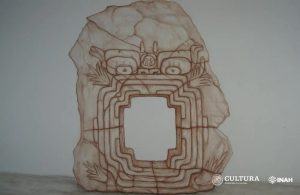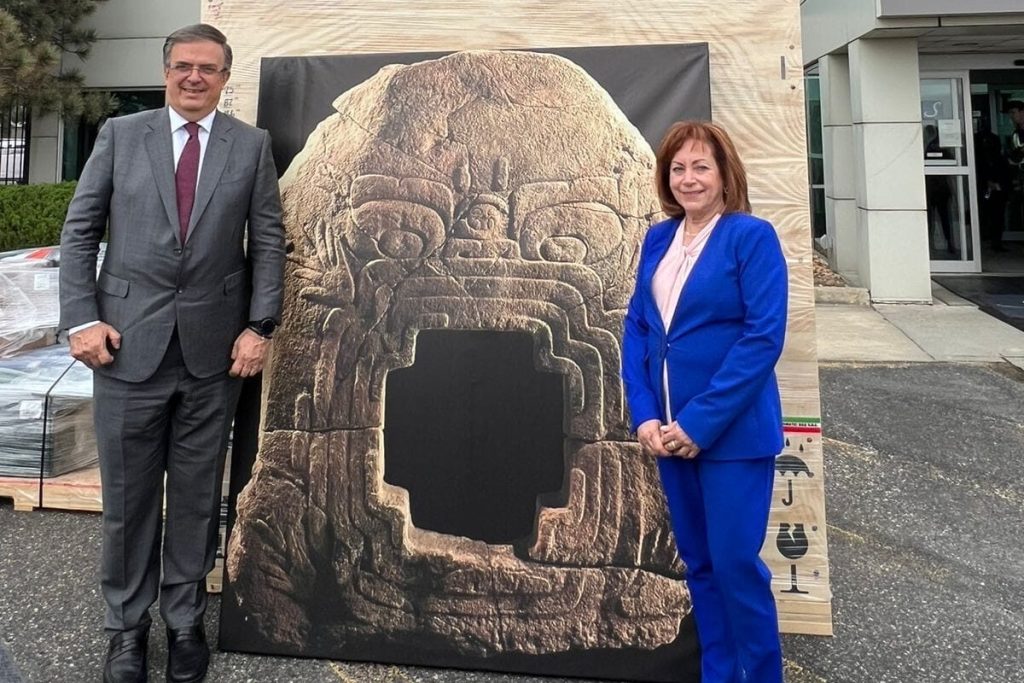A SUMMARY OF THE MOST EXCITING ART NEWS FROM AROUND THE GLOBE
While we focus on Indian art, we can’t obviously function in a vacuum. It’s a small world and everything is connected, especially on the web. So, let’s train our spotlight across the world map to see what’s going on — from art trends to socio-political issues to everything that affects the great aesthetic global consciousness. Or, let’s just travel the world and have some fun!
Pre-Columbian sculpture from 2,500 years ago returned to Mexico.
The Associated Press reported last week that a large stone sculpture called the “Earth Monster” or “Monster of the Earth” had been delivered back to Mexico from the United States.
The stone object, which is about six feet tall and weighs more than two tonnes, was most likely created during the Middle Preclassic Period, which lasted from 800-400 BCE. Although it is unknown exactly how the statue ended up in the United States, the AP claims that it was taken from Chalcatzingo in central Mexico in the 1960s. The statue was taken by the Manhattan District Attorney’s office’s Antiquities Trafficking Unit and later discovered by Mexican authorities, according to an announcement made last month by the Mexican National Anthropology and History Institute (INAH). ARTnews claimed in April that Marcelo Ebrard, Mexico’s secretary of foreign affairs, had verified the news in a tweet that read: The most sought-after Olmec artifact by Mexico has been located and is on its way back to its rightful place of origin. The enormous old artwork, according to AP’s Ebrard, was presented to the Mexican consulate in Denver, Colorado, on Friday. Read more on ARTnews

Courtesy: ARTnews
King Tut as a Black Man: Sculpture Provokes Global Outrage
A contemporary piece of art featured in a new exhibit at the National Museum of Antiquities in Leiden, the Netherlands, has stirred some debate since it appears to show the Pharaoh Tutankhamun as Black. The exhibition “Kemet: Egypt in Hip-Hop, Jazz, Soul and Funk” combines artefacts from the museum’s collection of Egyptian antiquities with music by artists from the African diaspora, such as Miles Davis, Erykah Badu, Beyoncé, and Rihanna, who were influenced by ancient Egyptian culture. While generations of Black musicians have found inspiration and empowerment in ancient Egyptian culture, the Leiden show admits that the racial identification of ancient Egyptians has been a hotly debated subject for decades. The name of the show is derived from Kemet, the ancient Egyptians’ term for their home country; it literally translates to “black land.” However, rather than referring to the people’s skin tone, the display claims that the colour represented the deep, rich soil of the Nile river region. The museum also refutes the idea that many statues of ancient Egyptians had their noses cut off in contemporary times in order to cover off African traits. Read more on Art net news.

Courtesy: Art net news
Jewish Dealer’s Heirs Sue Sotheby’s, Claiming That the Auction House’s Disclosure of a Tiepolo Work “Misled the Public”
The only information provided by Sotheby’s New York about the painting St. Francis of Paola Holding a Rosary, Book, and Staff (1730s) by Giovanni Battista Tiepolo was that it had previously been sold anonymously at Sotheby’s in 2001 and had once belonged to Galerie Wolfgang Böhler in Bensheim, Germany. According to a lawsuit cited in the New York Times, Otto Fröhlich, a Jewish gallery owner, left the painting in Austria only under duress when he escaped the Nazis for London in 1938, according to the heirs of Fröhlich. Read more on Art net news

Courtesy: Art net news






